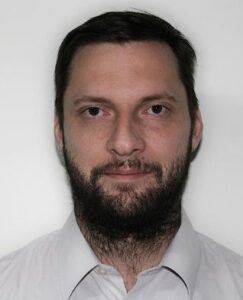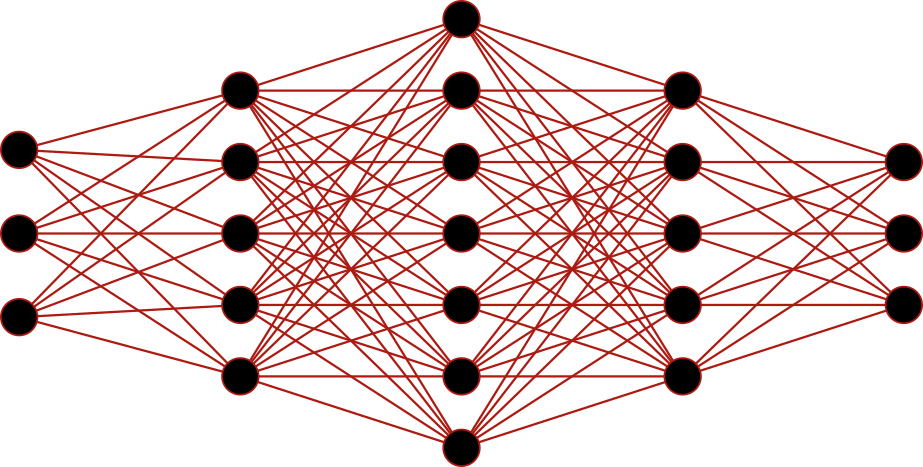About us
Our mission
Data-driven decision-making is one of, if not the hottest field of science today. However, extracting information from data and machine learning based on data are not trivial processes, they require deeper expertise. This is the area of expertise of the Applied Data Science Research Group (AAK, according to the Hungarian abbreviation) at the Faculty of Informatics of Eötvös Loránd University (ELTE IK), which includes pre-processing, transformation and analysis of data using data science methods, and the development of industrial applications supported by artificial intelligence and machine learning. We aim to achieve new scientific results and their application in practice.
Areas of expertise
All our staff members have teaching and research responsibilities in the following areas in the application of ELTE IK:
Research
- Artificial Intelligence,
- Data Science,
- Machine Learning,
- Neural Networks,
- Analytic and computational number theory.
Development
- Program development in HPC (High Performance Computation) environments,
- Data analysis models,
- Decision Support Systems.
Professional Team
Sensors and Data: If this is still missing, sensors need to be installed.
Pre-processing of data: care should be taken not to give an analytical method incorrect or wrong data, as this could give false results.
Data analysis: analysing data to answer a company-defined problem using statistics, data mining and artificial intelligence.
Implementation and integration: the results obtained need to be integrated into business magement processes..
Training: we provide training courses and expertise on topics related to our areas of expertise.
Sensors and data
Usually, a company already has some kind of data collection solution. If this is still missing, sensors must be installed. AAK's services in this area include: data storage, database structure planning and implementation, and data delivery from the source to the storage location (database, servers) are among our competencies. Due to the large amount of data, it may be necessary to speed up data access for subsequent analyses, so we use data aggregations and various transformations. We design the database structure in such a way that we are able to receive new data without making any changes later on.

Data preprocessing
Data preprocessing is an extremely diverse field. If we submit incorrect or wrong data to an analysis method, we will naturally get false results. AAK competence solutions: filtering of faulty data, handling and/or replacing missing data, detecting data gaps (e.g.: a sensor fails and does not send data, then this data is lost until it is repaired), preparation of basic statistical data, execution of various data transformation steps for the given depending on the analysis method, selection of features (feature selection), selection of main components depending on the given analysis method, dimensionality reduction and matrix factorization.

Data analysis
During the analysis of the data, we provide answers to problems defined by each company, but different analytical methods provide answers to different problems. Therefore, the selection and implementation of the appropriate method requires professional competence. Based on the input data created as a result of the pre-processing, we can create models that are capable of automatically supporting corporate decision-making. We can apply the methods of the following IT subfields:
Statistics: The main goal is to extract the average, standard deviation, and other basic information of the data, but of course there are also subfields that are more closely related to analysis: statistical methods, statistical tests, verification of distributions, verification of applications of analysis methods, etc. Since the analysis process is never set in stone, it is often necessary to perform statistical analyzes to define further analysis steps.
Data mining: The field is highly interdisciplinary, so it is often difficult to find the right model for the given task. We seek answers to questions such as which data elements belong to a group (clustering or classification) or which regularities can be extracted from the data set (association rules). It is often necessary to apply them together and one after the other, we show an example of this with the figure belonging to the chapter.
Artificial Intelligence: AI is already present in almost every aspect of life. The goal is always to achieve the right accuracy, i.e. that the neural network learns the relationship between the data in the right way and gives accurate well-being for the future. In this area, it is mostly true that the design of the model is not clear: the use of different parameters or different algorithms can give different results, of which the best one must be selected.
Staff

Dr. habil. Farkas Gábor
Lead researcher
ELTE, Faculty of Informatics, Computer algebra Department, university associate professor
Research Fields:
Analytic and computer number theory
Probability theory
Data science, matrix factorization

Dr. Szekeres Béla János
Researcher
ELTE, Faculty of Informatics, Department of Numerical Analysis, university assistant professor
Research Fields:
Neural networks
Functional-differential equations
Machine learning

Dr. Pödör Zoltán
Researcher
ELTE, Faculty of Informatics, Department of Numerical Analysis, university associate professor
Research Fields:
Statistically based data analysis
Data mining, Time series analysis
Management and processing of sensor data

Dr. Gludovátz Attila PhD.
Researcher
ELTE Faculty of Informatics, Department of Programming Theory and Software Technology, University assistant professor
Research Fields:
Statistically based data analysis
Data mining, Time series analysis
Management and processing of sensor data

Dr. Bencsik Gergely
Researcher
ELTE Faculty of Informatics, Department of Data Science and Data Technology, university associate professor
Research Fields:
Statistical tests
Artificial Intelligence
Decision support systems

Szőlősi József
Researcher
ELTE Faculty of Informatics, Research Assistant, PhD student
Research Fields:
Data science
Management and processing of sensor data
Deep learning

Magyar Péter
University teaching assistant
ELTE, Faculty of Informatics, Computer algebra Department, University teaching assistant
Research Fields:
Data science, matrix factorization
High Performance Computing (HPC)
Artificial Intelligence

Papatyi Dániel
Research assistant
ELTE Faculty of Informatics, MSc student
Research Fields:
Data science, matrix factorization
High Performance Computing (HPC)
Artificial Intelligence
Contact
Adattudomány Alkalmazásai Kutatócsoport
Eötvös Loránd Tudományegyetem Informatikai Kar
Szombathely, Károlyi Gáspár tér 4, 9700
E-mail: contact@adat2k.eu
Contact us with confidence.
